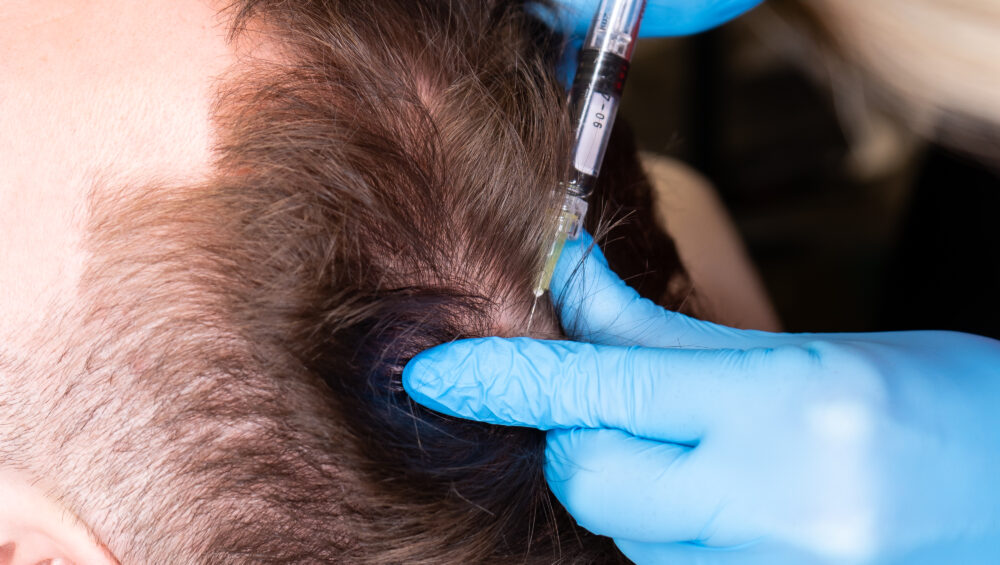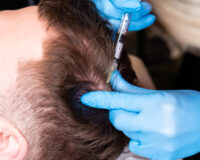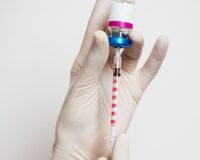Hair loss in men—particularly androgenetic alopecia—can be emotionally challenging and medically complex. Here’s a modern roadmap to treatment
Established Medical Options for Hair Loss
- Minoxidil (topical)
Widely used and proven to extend the hair’s growth phase. It’s available over-the-counter and works best when maintained long-term. Discontinuation reverses gains over time. - Finasteride (oral or topical)
A 5α-reductase inhibitor that reduces DHT, helping preserve and regrow hair, especially at the crown. Results appear in months and require long-term use. Potential side effects affect about 2% of users (e.g. libido changes). Topical versions available at the You Can Clinic can provide the same therapeutic effects whilst lessening the risks of side effects. - Combination Approaches
Combining finasteride and minoxidil offers even greater effectiveness than individual treatments
Device-Based & Regenerative Therapies for Hair Loss
- Low-Level Laser Therapy (LLLT)
Non-invasive red or near-infrared light—via hat, comb, or helmet—can increase hair density, often outperforming traditional therapies alone. - Platelet-Rich Plasma (PRP)
Involves injecting concentrated platelet-rich plasma into the scalp, which can improve hair thickness with minimal risks. Typically done in multiple sessions.
Exosome Therapy: What You Need to Know
- What Are Exosomes?
Tiny vesicles (30–150 nm) packed with growth factors, cytokines, and miRNAs. They naturally mediate intercellular communication and can influence hair follicle activity. A number of varieties of exosomes are available including plant and animal-based versions. Probably the animal-based products are more effective as they have a plasma membrane rather than a cellulose membrane (plant) the latter limiting penetration of the cell. - Mechanism in Hair Growth
Exosomes have been shown in studies to stimulate follicle proliferation, promote the anagen (growth) phase and enhance hair density. - Clinical Evidence
- Injections of exosomes led to a statistically significant increase in hair density at 4 and 12 weeks, with high patient satisfaction and no reported side effects.
(PubMed) - A systematic review found exosome therapy to yield greater hair density improvements than PRP or minoxidil in androgenetic alopecia.
(Cureus) - A 2025 study using exosomes showed meaningful regrowth in men with early-stage male-pattern baldness over 16 weeks.
(MDPI) - One report highlighted 78% of patients saw improved density with exosome treatment (vs 27% in controls), and shaft diameters grew by 31.6% (vs 7.8%), with high satisfaction.
- Injections of exosomes led to a statistically significant increase in hair density at 4 and 12 weeks, with high patient satisfaction and no reported side effects.
Practical Considerations
Typically performed via microneedling to enhance delivery. Visible results can take 3–6 months.
- Regulatory & Safety Notes
Exosome therapies remain an early but potentially exciting treatment for male hair loss but are not uniformly regulated. In Europe and the UK, human exosomes are illegal and whilst marketed on many unregulated marketing sites, should not be used. It is important that patients only receive treatment via reputable health care professionals.
- Putting Treatments Together: A Personalised Strategy
| Patient Scenario | Management Plan |
| Early or moderate thinning | Initiate with topical minoxidil + finasteride |
| Partial response to medications | Consider advanced options like exosome therapy, with proper medical supervision |
| Wanting overall scalp health | Use combination approaches and maintain monitoring |
If you’re exploring exosomes in practice, it’s wise to pair them with foundational treatments like minoxidil or finasteride and to document outcomes for each patient carefully. Receive treatment from a registered healthcare professional. Obtain drug treatment via a registered pharmacy like the You Can Clinic.




